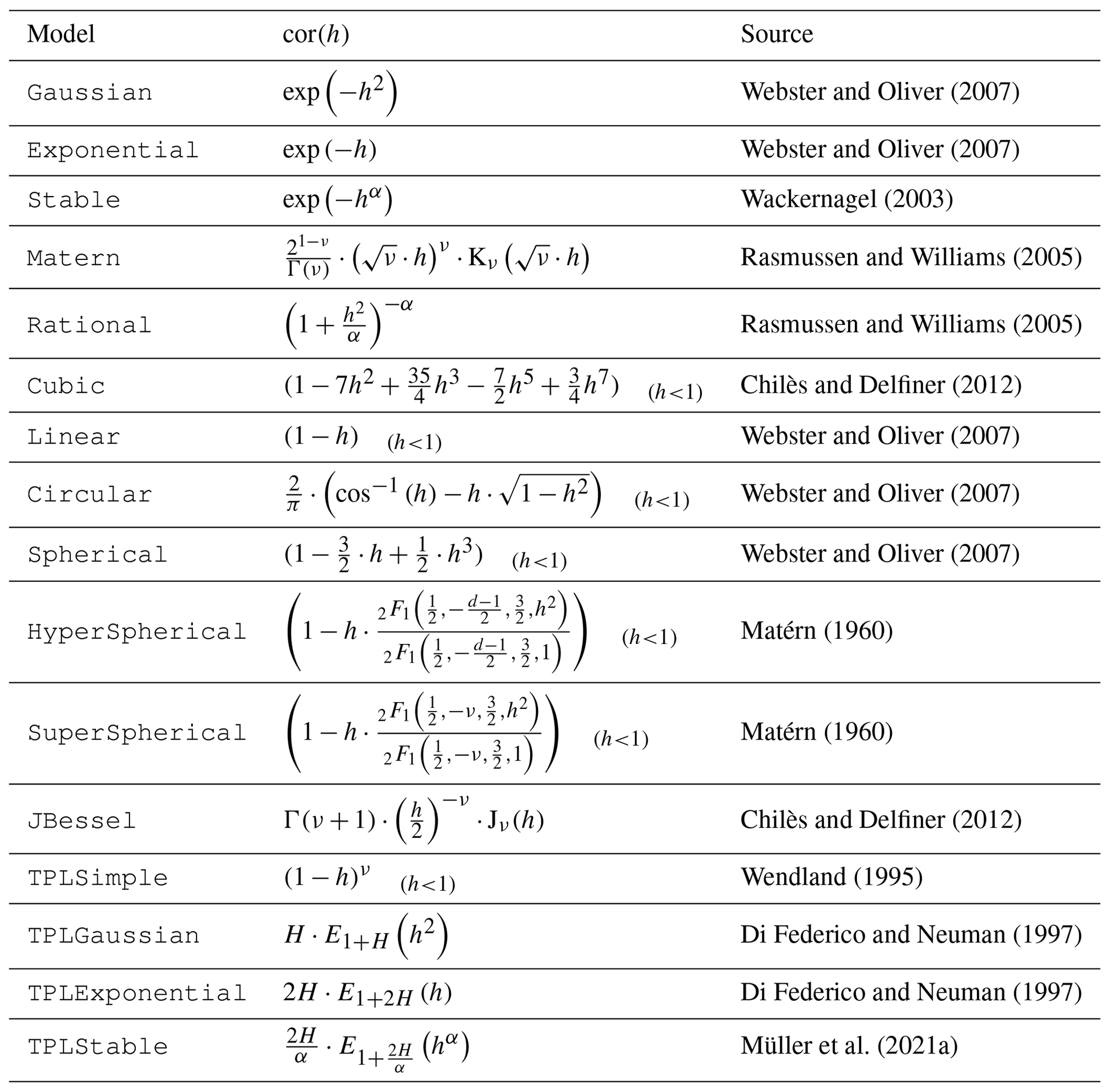One of the fundamental features of GSTools is the powerful CovModel class, which allows you to easily define arbitrary covariance models by
yourself. The resulting models provide a bunch of nice features to explore the
covariance models.
A covariance model is used to characterize the semi-variogram, denoted by , of a spatial random field. In GSTools, we use the following formulation for an isotropic and stationary field:
Where:
- is the lag distance
- is the main correlation length
- is a scaling factor for unit conversion or normalization
- is the variance
- is the nugget (subscale variance)
- is the normalized correlation function depending on the non-dimensional distance
Depending on the normalized correlation function, all covariance models in GSTools are providing the following functions:
- is the so called correlation function
- is the so called covariance function, which gives the name for our GSTools class
.. note::
We are not limited to isotropic models. GSTools supports anisotropy ratios for length scales in orthogonal transversal directions like:
- (main direction)
- (1. transversal direction)
- (2. transversal direction)
- ...
These main directions can also be rotated. Just have a look at the corresponding examples.
Provided Covariance Models¶

Taken from Müller et al. (2022).
- Müller, S., Schüler, L., Zech, A., & Heße, F. (2022). GSTools v1.3: a toolbox for geostatistical modelling in Python. Geoscientific Model Development, 15(7), 3161–3182. 10.5194/gmd-15-3161-2022